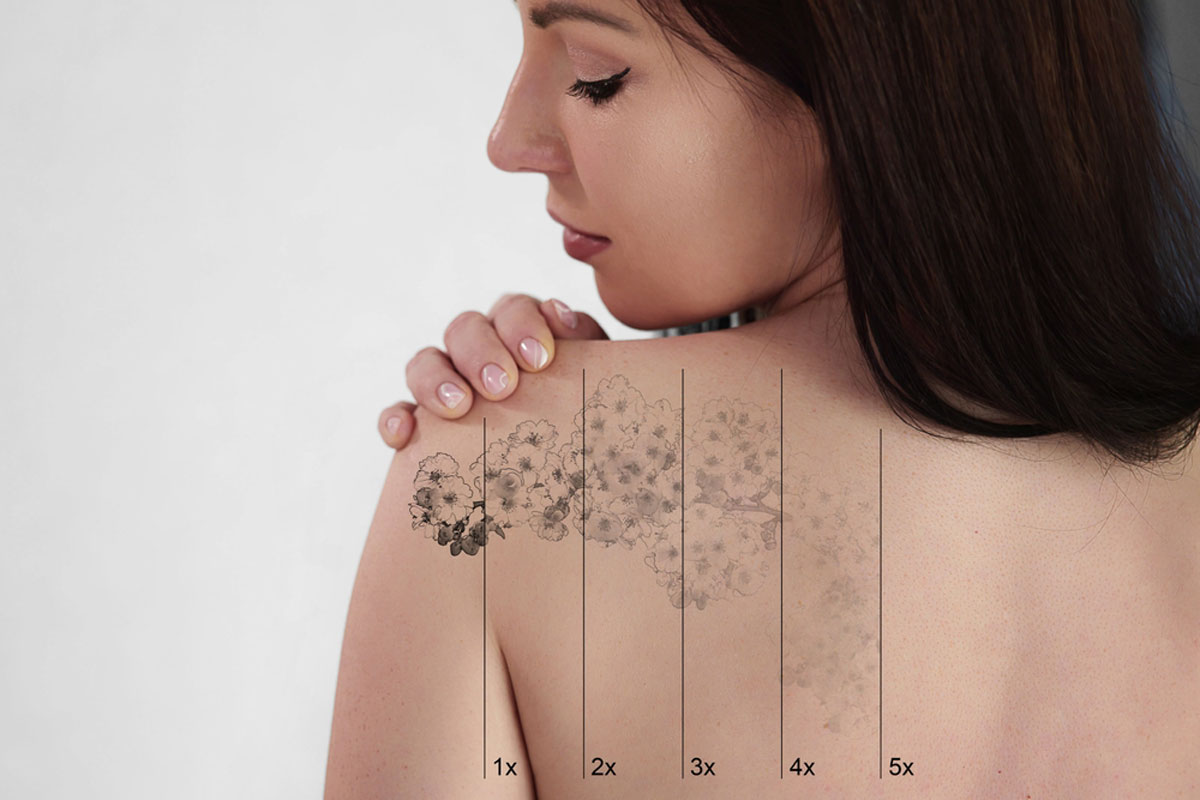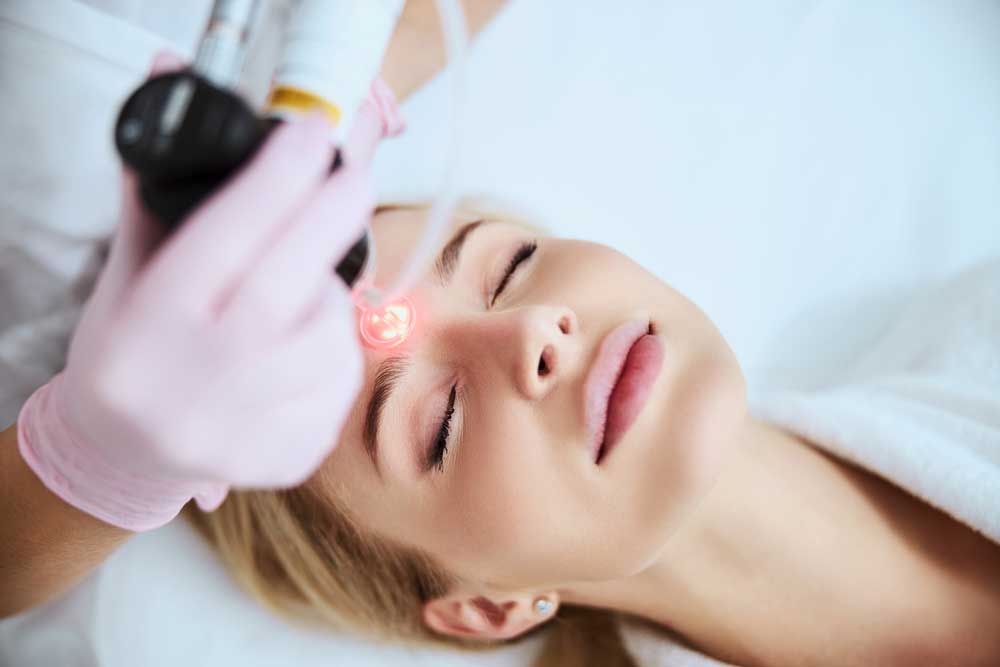Tattoos are a popular form of self-expression that often have deep meaning. Sometimes, people change their minds about their tattoos and want them removed. Whether it is due to a change in career or personal taste, or it was just not a good decision, tattoo removal is a growing industry. When performed by a trained healthcare professional, tattoo removal can be safe and effective.
There are multiple options to remove tattoos, such as using a laser, surgical excision, or dermabrasion. Let’s explore the various tattoo removal methods to help you find the best fit and be confident in your skin.
Laser Tattoo Removal
Using a laser to remove tattoos is the most common process, and it is regulated by the FDA. At RoseHall Medical Aesthetics, we are pleased to offer the Lutronic™ Hollywood Spectra laser, the world’s leading and most advanced laser, in Bowie, Maryland to safely and effectively remove or lighten tattoos.
When tattoos are applied, a needle deposits ink into the dermis, the second layer of skin. Laser tattoo removal shatters the tattoo ink into smaller pieces that the body can dispose of on its own. Lutronic™ lasers are the most effective as they can remove tattoos on all skin tones, cause less discomfort and require fewer sessions than traditional lasers, and they can treat a wide range of tattoo colors, intensities, and depths.
- Can be painful, feeling similar to a bad sunburn (but not as painful as the original tattoo)
- Will often require multiple sessions
- Can be expensive
Surgical Excision
Surgically removing the tattooed skin is the most invasive and intensive tattoo removal option available. This method is not recommended as a first-line treatment and is usually used when smaller tattoos have not responded to other treatments.
How It Works
Prior to beginning, the tattooed area is numbed with a local anesthetic. A healthcare professional carefully removes the tattooed skin with a scalpel and then stitches the surrounding skin together to close the wound. A skin graft may be required if the tattooed area is large.
Effectiveness
This method is highly effective as it physically removes the tattooed skin. However, it does leave a scar and is not recommended for larger tattoos.
Side Effects
The side effects and risks are similar to other surgeries, such as scarring, poor wound healing, and infection. To prevent infection, clean the surgical site daily with soap and water and follow your provider’s aftercare instructions.
Pros
- Provides Immediate results
- Is effective, especially for smaller tattoos
Cons
- Can leave behind a visible scar
- Is not suitable for larger tattoos
- Requires a surgical procedure
- Is more expensive
Dermabrasion
Dermabrasion is a less commonly used tattoo removal method that essentially “sands” down the skin to remove the layers containing tattoo ink. While it may be a good option for those not eligible for laser treatments, dermabrasion is painful and less precise.
How It Works
The affected skin is typically chilled or treated with a local anesthetic until numb, and then a high-speed rotary device with an abrasive wheel or brush is applied until the tattooed skin is sanded off.
Effectiveness
While it can be effective for superficial tattoos, dermabrasion is not the most effective tattoo removal option. If chosen, clients should be aware of the careful post-treatment care needed to minimize the risk of infection and scarring.
Side Effects
Side effects can be more severe, with redness, swelling, or bleeding at the tattoo site. There is also a risk that dermabrasion may cause hyperpigmentation (darkening of the skin) in clients with darker skin tones.
Pros
- Can be effective for small and superficial tattoos with less detailing
- Is cheaper than laser tattoo removal
Cons
- Is very painful and requires two to three weeks to recover after the procedure
- Has a higher risk of scarring
- Is less precise than other methods
Removal Options Not Recommended
Don’t be fooled by the many tattoo removal options that can either be done by yourself or at home, as they are ineffective and potentially dangerous.
- Salabrasion: This removal method rubs salt water into the skin to remove the top layers and expose the tattoo ink. It is not recommended for body tattoos as the ink lies in the dermis, so multiple layers of skin would need to be removed. The risks with salabrasion include infection, scarring, and long-term damage to the epidermis, the top layer of skin.
- Tattoo Removal Creams: This choice may be appealing due to its ease of use and low cost, but in short, they do not work. Creams alone, regardless of their ingredients, cannot remove ink from the dermis. At best, the creams will appear to fade the tattoo by bleaching the epidermis. At worst, they can cause rashes, burns, and scars.
- Subcutaneous Solutions: Injecting acid-based solutions under the skin can lighten the look of a tattoo but can leave long-term scars or burns. Additionally, these injections are not consistently effective.
Choosing the Right Method
At RoseHall Medical Aesthetics, we understand that every patient, and every tattoo, is unique. Our experienced team will walk through the tattoo removal process and recommend the best option for your specific needs. Whether you are looking to fade your tattoo for a cover-up, or remove it entirely, we can guide you through the process to achieve your desired results.
Erase the Past, Embrace the Future
You deserve to feel comfortable and confident in your skin. Tattoo removal options have advanced over time and can safely and effectively remove your unwanted ink. While laser removal outshines the competitors with effectiveness and the least amount of side effects and risks, our team will be happy to talk to you about your options. Ready to say goodbye to unwanted ink? Contact our experienced team at RoseHall Medical Aesthetics today and take the first step toward feeling confident in your skin.


